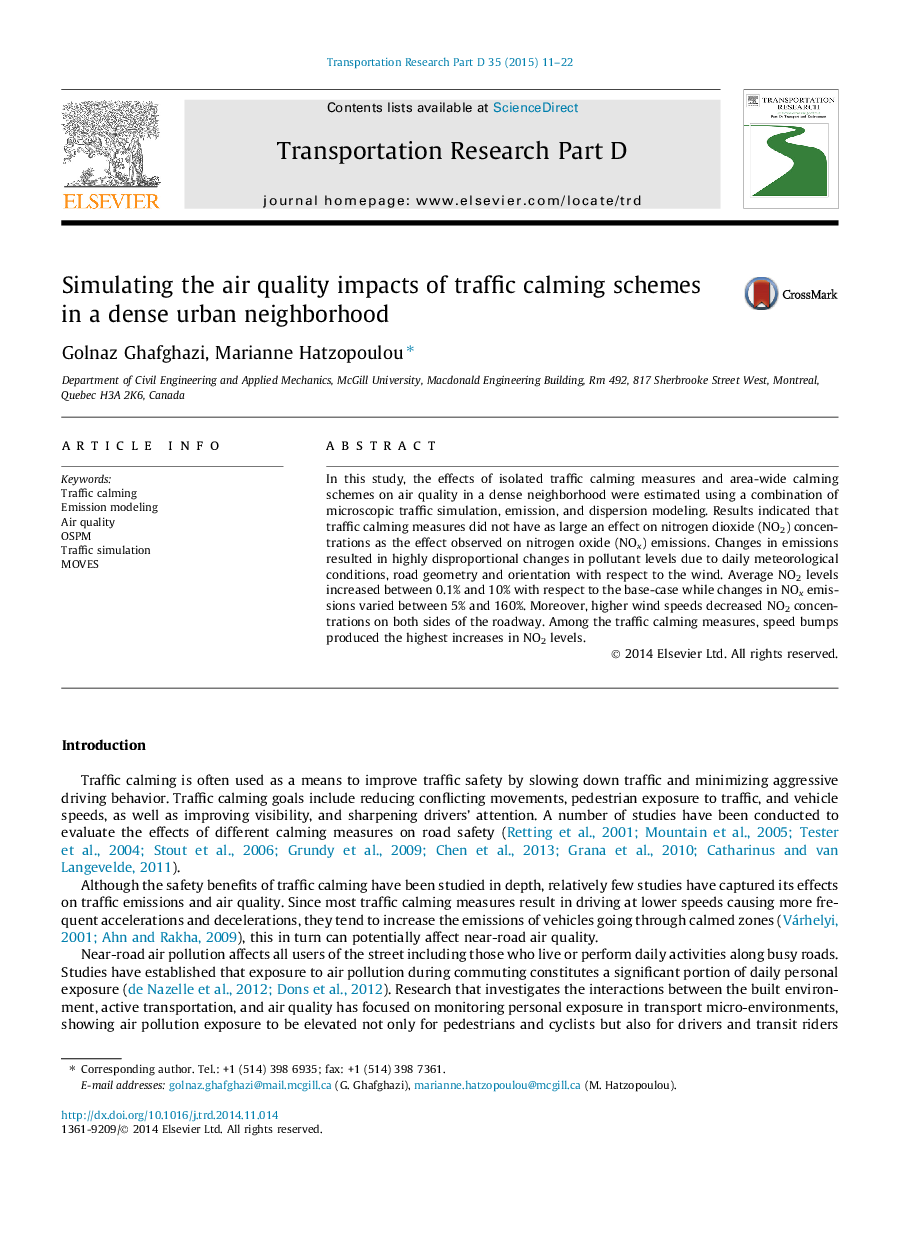| Article ID | Journal | Published Year | Pages | File Type |
|---|---|---|---|---|
| 7500563 | Transportation Research Part D: Transport and Environment | 2015 | 12 Pages |
Abstract
In this study, the effects of isolated traffic calming measures and area-wide calming schemes on air quality in a dense neighborhood were estimated using a combination of microscopic traffic simulation, emission, and dispersion modeling. Results indicated that traffic calming measures did not have as large an effect on nitrogen dioxide (NO2) concentrations as the effect observed on nitrogen oxide (NOx) emissions. Changes in emissions resulted in highly disproportional changes in pollutant levels due to daily meteorological conditions, road geometry and orientation with respect to the wind. Average NO2 levels increased between 0.1% and 10% with respect to the base-case while changes in NOx emissions varied between 5% and 160%. Moreover, higher wind speeds decreased NO2 concentrations on both sides of the roadway. Among the traffic calming measures, speed bumps produced the highest increases in NO2 levels.
Related Topics
Life Sciences
Environmental Science
Environmental Science (General)
Authors
Golnaz Ghafghazi, Marianne Hatzopoulou,
